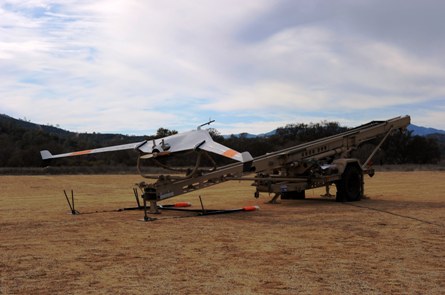Lockheed Martin has expanded its unmanned technology portfolio with the acquisition of Huntsville, Alabama-based Chandler/May, a maker of both vehicles and ground control stations.
The acquisition adds the biggest supplier to AAI Corp. for the US Army's "ONE" ground control station and a designer of small, tactical unmanned air vehicles (UAVs), including the Desert Hawk and bat-winged Fury. The Desert Hawk was designed and produced by Chandler/May subsidiary AME, but sold to militaries under Lockheed's Skunk Works brand.
"Joining Lockheed Martin is a logical step to expand our current offerings and provides opportunities to reach additional customers," says Chandler/May president Jesse May.
Lockheed has emphasised the value of acquiring Chandler/May's ground control system technology, but declined to say whether they intend to integrate Lockheed's own UAVs.
The company will be rebranded as a division of Lockheed, and the contracts it currently holds will become Lockheed's contracts. Lockheed declined to comment on aspects of the sale, including negotiations or sales price.
 |
|---|
| ©AME |
"It's not an easy time to be a small UAV company," says Phil Finnigan, an analyst with Teal Group. "Budgets are under pressure. Companies that have established progammes are in a strong position...the emphasis is on improving what you have instead of buying new systems. In that environment it makes sense that a small company working to establish itself wants to work with a large, established player like Lockheed Martin."
Lockheed's acquisition follows by several years similar moves by rivals Northrop Grumman and Boeing. Chandler/May's Fury is designed to compete with the Northrop Bat UAV family, which was acquired from Swift Engineering. In 2007, Boeing acquired Scan Eagle UAV maker Insitu, which also produces the Integrator UAV that also straddles the Tier II and Tier III UAV classes occupied by the Bat and Fury aircraft.
Lockheed's Skunk Works division was among the the earliest pioneers in the UAV industry. Its Dark Star UAV was a candidate for the US Air Force's high-altitude spy aircraft, but lost the competition to the then-Ryan (now Northrop) RQ-4 Global Hawk. Lockheed later experimented with the long-endurance Polecat UAV, but it crashed during a test flight. In 2009, the USAF revealed the existience of the Skunk Works RQ-170 Sentinel, a stealthy UAV.
Source: Flight International























